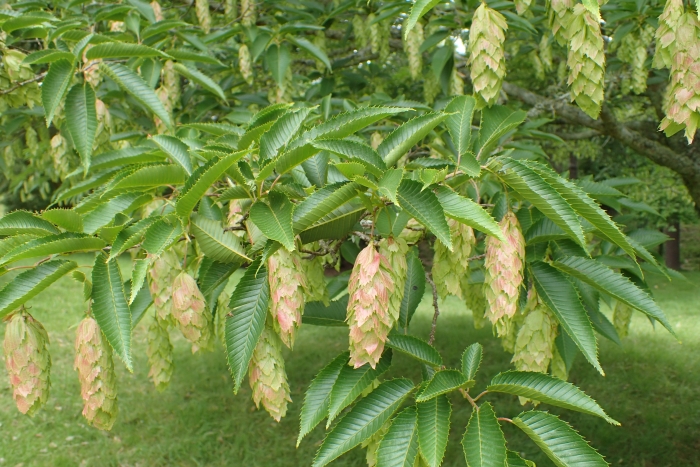Japanese Hornbeam
(Carpinus japonica)
Japanese Hornbeam (Carpinus japonica)
/
/

Krzysztof Ziarnek, Kenraiz
CC BY-SA 4.0
Image By:
Krzysztof Ziarnek, Kenraiz
Recorded By:
Copyright:
CC BY-SA 4.0
Copyright Notice:
Photo by: Krzysztof Ziarnek, Kenraiz | License Type: CC BY-SA 4.0 | License URL: https://creativecommons.org/licenses/by-sa/4.0 | Uploader: Kenraiz | Publisher: Wikimedia Commons | Title: Carpinus_japonica_kz02.jpg | Notes: {{Information |Description={{da|1=[[:da:Japansk Avnbøg|Japansk Avnbøg]] (''Carpinus japonica''): Vækstform}} {{en|1=''Carpinus japonica'': Habitus}} |Source=Own work by uploader |Author=[[User:Sten|Sten Porse]] |Date=21.1.2009 |Permission= |other_versi



























Estimated Native Range
Summary
Carpinus japonica, commonly known as Japanese Hornbeam, is a deciduous tree native to the understory of cool, moist woodlands in Japan. It typically grows to 12–15 meters (39–49 ft) tall and is noted for its attractive foliage, which is longer and darker than that of the European hornbeam (Carpinus betulus). The leaves are dark, glossy, and slender, turning to a pleasing yellow in the fall. The bark is smooth and gray, providing winter interest. Japanese Hornbeam produces inconspicuous brown, cream, yellow, and green flowers in the spring, which are followed by distinctive hop-like fruiting catkins.
The Japanese Hornbeam is valued for its elegant form and its ability to thrive in shaded conditions, making it an excellent choice for woodland gardens, shaded borders, and as an understory tree in larger landscapes. It has a slow to moderate growth rate, which, along with its tolerance for pruning, makes it suitable for smaller gardens as well. This tree has earned the Royal Horticultural Society’s Award of Garden Merit, indicating its exceptional performance in gardens. While it prefers moist, well-drained soils, it is relatively adaptable and can tolerate a range of soil types, provided they are not waterlogged. Gardeners should be aware that it can suffer from leaf spot and canker, although these are not usually serious problems.CC BY-SA 4.0
The Japanese Hornbeam is valued for its elegant form and its ability to thrive in shaded conditions, making it an excellent choice for woodland gardens, shaded borders, and as an understory tree in larger landscapes. It has a slow to moderate growth rate, which, along with its tolerance for pruning, makes it suitable for smaller gardens as well. This tree has earned the Royal Horticultural Society’s Award of Garden Merit, indicating its exceptional performance in gardens. While it prefers moist, well-drained soils, it is relatively adaptable and can tolerate a range of soil types, provided they are not waterlogged. Gardeners should be aware that it can suffer from leaf spot and canker, although these are not usually serious problems.CC BY-SA 4.0
Plant Description
- Plant Type: Tree
- Height: 20-30 feet
- Width: 20-30 feet
- Growth Rate: Slow
- Flower Color: Green, Cream
- Flowering Season: Spring
- Leaf Retention: Deciduous
Growth Requirements
- Sun: Part Shade, Full Shade
- Water: Medium
- Drainage: Medium, Fast
Common Uses
Bird Garden, Butterfly Garden, Deer Resistant, Hedges, Low Maintenance
Natural Habitat
Understory of cool, moist woodlands in Japan
Other Names
Common Names: Japanese Hornbeam, Japansk Avenbok
Scientific Names: , Carpinus japonica, Carpinus carpinoides, Carpinus japonica var. cordifolia, Carpinus distegocarpus, Carpinus japonica var. caudata, Carpinus carpinoides var. cordifolia, Carpinus carpinus, Carpinus carpinus publ, Distegocarpus carpinoides
GBIF Accepted Name: Carpinus japonica Blume